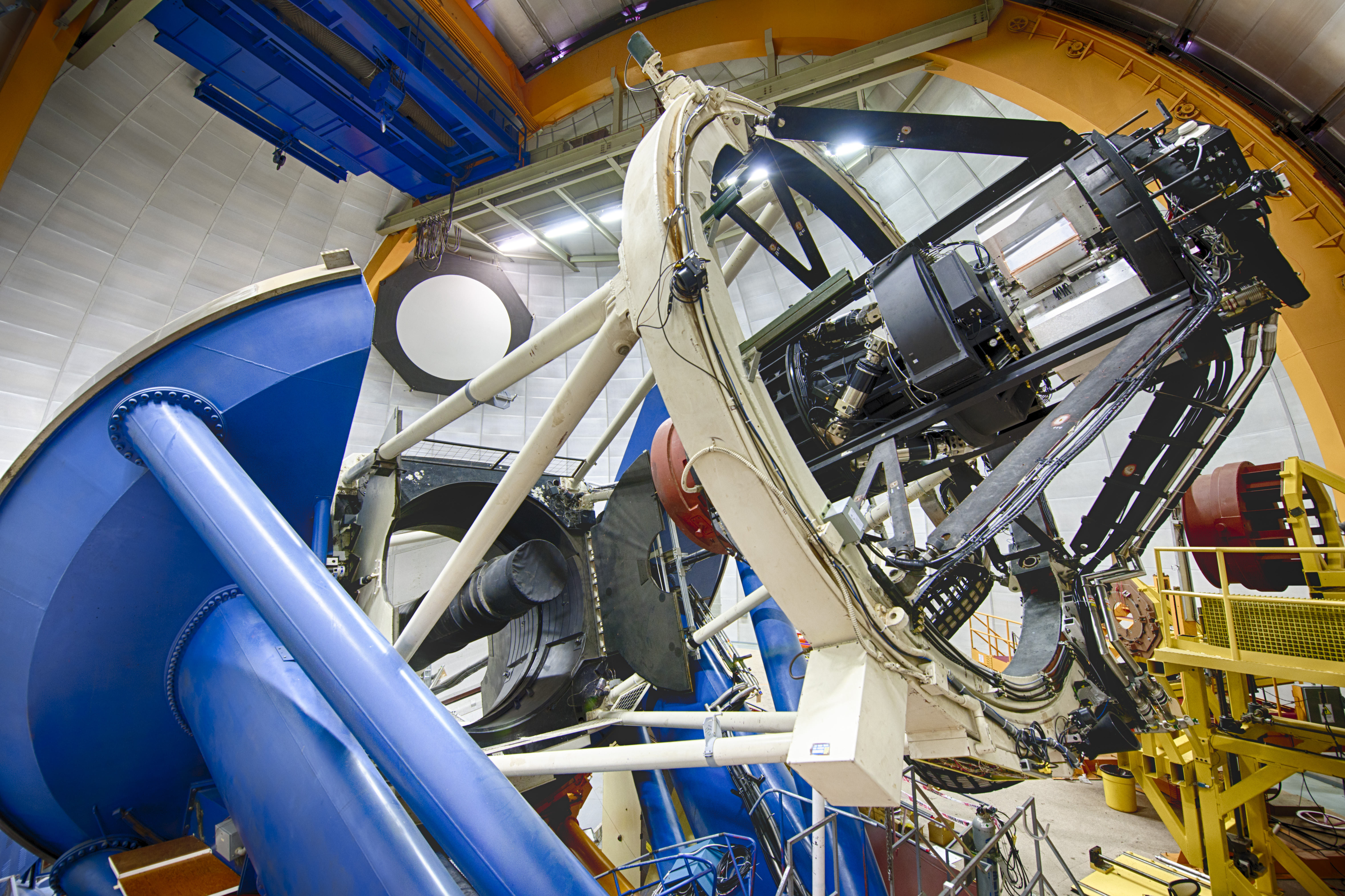Science
Related: About this forumDark Energy Camera Captures Stunning New Image of Messier 83
Dec 9, 2024 by News Staff
The swirling spiral arms of Messier 83, one of the most prominent spiral galaxies in the night sky, display a high rate of star formation and have been host to six observed supernovae, according to astronomers from NSF’s NOIRLab.

This DECam image shows the spiral galaxy Messier 83. Image credit: CTIO / NOIRLab / DOE / NSF / AURA / T.A. Rector, University of Alaska Anchorage & NSF NOIRLab / D. de Martin, NSF NOIRLab / M. Zamani, NSF NOIRLab.
Messier 83 is located approximately 15 million light-years away in the southern constellation of Hydra.
Also known as the Southern Pinwheel Galaxy, M83, NGC 5236, LEDA 48082 and UGCA 366, this galaxy has a diameter of around 50,000 light-years — about twice as small as the Milky Way.
It has an apparent magnitude of 7.5 and is one of the brightest spiral galaxies in the night sky. It can be observed using a pair of binoculars most easily in May.
Messier 83 is oriented so that it is almost entirely face-on as seen from Earth, meaning that astronomers can observe its spiral structure in fantastic detail.
The galaxy is a prominent member of a group of galaxies known as the Centaurus A/M83 Group, which also counts the dusty NGC 5128 and the irregular galaxy NGC 5253 as members. It was discovered by the French astronomer Nicolas Louis de Lacaille on February 23, 1752.
More:
https://www.sci.news/astronomy/dark-energy-camera-image-messier-83-13491.html
riversedge
(73,418 posts)love_katz
(2,872 posts)And, yet, we still have ignorant idiots like the flat earthers, and other science deniers. Just unbelievable. ![]()
Even worse, too many of those fools have been elected or appointed to public office, where they can get their mitts on the steering wheel of public policy.
We really need more science education in this country, as well as critical thinking and civics.
SCantiGOP
(14,303 posts)a strong undercurrent of anti-intellectualism in this country. It appears to be gettting worse, and I just hope that is just an observation brought about by a greater awareness of what is going on around us.
Martin68
(24,738 posts)Bernardo de La Paz
(51,286 posts)I read it mainly because I was intrigued about that.
Bernardo de La Paz
(51,286 posts)Judi Lynn
(162,547 posts)Judi Lynn
(162,547 posts)
The Dark Energy Survey (DES) needs to observe hundreds of millions of galaxies to achieve its science goals. The state-of-the-art Dark Energy Camera (DECam) was designed and built from 2004 to 2010. Scientists at the Fermi National Accelerator Laboratory led the project, which was primarily funded by the U.S. Department of Energy, along with significant contribution from US universities, the United Kingdom, Spain, Brazil, Germany, and Switzerland. Just as DES is an international collaboration, DECam is an international camera with components built in five different countries.
The science requirements of DES drive the construction of the Dark Energy Camera (DECam). DES will look deeply into the universe, observing galaxies at great distances to record their motion and conditions in the distant past. To do this, DES needs a camera which will view relatively large areas of the sky at once while being sensitive to the redshifted light from these distant objects.
Everything about DECam is large-scale, including its field-of-view; about 14 copies of the moon would fit on the focal plane! The first and biggest of DECam’s lenses is nearly a meter (3.3 feet) across and weighs 176 kilograms (388 pounds), making it the largest optical corrector component currently used astronomy. The Dark Energy Survey records images using five filters, spanning 400 nm to 1080 nm. Each filter images the sky in a different color of light. With a 62 cm (24 inch) diameter, these too are the largest in use in the astronomical community. The images themselves are taken on a focal plane that is populated with 62 specially designed, state of the art CCDs, whereas ordinary digital cameras contain up to a few CCD. DECam can be read out in 20 seconds, faster than most CCD cameras currently in use in astronomy.
More:
https://www.darkenergysurvey.org/the-des-project/instrument/the-camera/